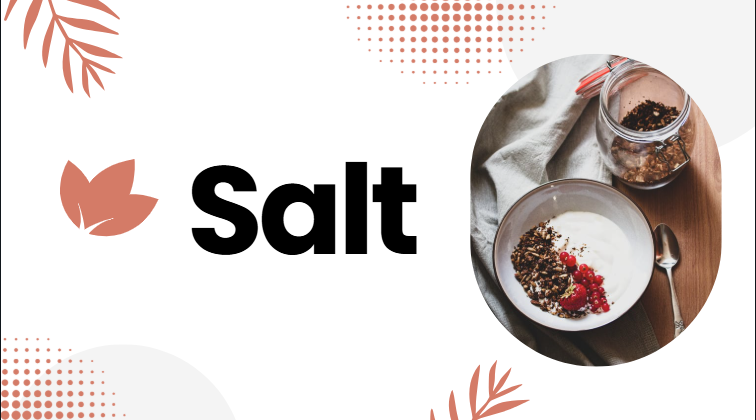Salt: Everything You Need to Know About the Essential Mineral
What is Salt?
Salt is a natural mineral made up of two elements: sodium (Na) and chloride (Cl). Together, they form sodium chloride (NaCl), commonly known as table . It’s found in seawater, rock deposits, and even in our bodies. is essential for life, and it plays a key role in food, health, and industry.
Why is Salt Important?
Salt is not just for flavor. Our bodies need to work properly. It helps:
- Maintain fluid balance
- Support nerve function
- Regulate muscle contractions
- Control blood pressure
Without enough , we may feel weak, dizzy, or even experience muscle cramps.
Also Read : Earn Tuffer
Types of salt
There are many kinds of available in the market. Each has different textures, colors, and uses.
1. Table Salt
- Most common type.
- Refined and finely ground.
- Contains iodine, added to prevent iodine deficiency.
- Often used in everyday cooking.
2. Sea Salt
- Made by evaporating seawater.
- Contains trace minerals like magnesium, calcium, and potassium.
- Has a coarser texture than table
- Used in gourmet cooking.
3. Himalayan Pink
- Mined from rocks in Pakistan.
- Pink color due to iron oxide (rust).
- Often claimed to have health benefits.
4. Kosher Salt
- Large, flaky crystals.
- Easy to pinch and sprinkle.
- Preferred by chefs for seasoning.
5. Rock Salt
- Large crystals from underground mines.
- Not always food-grade.
- Often used for de-icing roads or in lamps.
Health Benefits of Salt
When used in moderation, can offer several health benefits:
Supports Hydration
Helps maintain the right balance of electrolytes in your body, which is important for staying hydrated.
Improves Brain Function
Sodium helps transmit signals between nerves and muscles, improving brain function.
Prevents Iodine Deficiency
Iodized helps prevent goiter, a disease caused by lack of iodine.
Balances Blood Pressure (in the right amount)
While too much can raise blood pressure, too little can cause low pressure and dizziness.
Risks of Too Much
Eating too much can cause health problems, especially if combined with a poor diet.
High Blood Pressure (Hypertension)
Excess can lead to water retention, increasing blood pressure.
Heart Disease
High intake may increase the risk of heart attacks, stroke, and heart failure.
Kidney Damage
Too much can strain the kidneys, leading to kidney disease.
Osteoporosis
A high diet may cause your body to lose calcium, weakening bones.
How Much Should You Eat Daily?
The World Health Organization (WHO) recommends:
- Less than 5 grams of per day (about 1 teaspoon).
- This includes all in food—natural, added, and processed.
Tips to Reduce Intake:
- Read food labels carefully.
- Avoid processed foods (chips, canned soups, instant noodles).
- Use herbs and spices for flavor instead
- Cook more at home so you control
Cooking
Salt is used in almost every recipe. It enhances flavors and can even change the texture of food.
Common Uses:
- Seasoning meat, vegetables, pasta, and soups.
- Preserving food (pickles, cured meat).
- Baking (helps control fermentation).
Pro Tip:
Add gradually while cooking, and taste as you go. It’s easier to add more than to fix an overly dish!
Food Preservation
Before refrigerators, was used to preserve food. It works by:
- Drawing out moisture (which bacteria need to grow).
- Creating an environment where bacteria can’t survive.
Common examples of -preserved foods:
- Pickles
- Jerky
- Olives
Interesting Facts
- Salt has been used since ancient times as currency.
- Roman soldiers were sometimes paid in , giving rise to the word “salary.”
- The Dead Sea is so that you can float easily on its surface.
- There are over 14,000 known uses for !
Religion and Culture
Important in many religions and cultures. It symbolizes:
- Purity
- Preservation
- Protection
In some traditions, spilling is considered bad luck, but throwing a pinch over your left shoulder is thought to reverse the curse.
Production Methods
1. Evaporation
- Seawater is collected in large pools.
- Sun and wind evaporate the water.
- Salt crystals are left behind.
2. Mining
- Salt is extracted from underground rock deposits.
- It is then cleaned and crushed.
Producing Countries
According to recent data, the top producers in the world include:
- China
- United States
- India
- Germany
- Australia
Salt Substitutes
If you’re cutting back on , consider these healthier options:
- Potassium chloride (in substitutes)
- Herbs and spices (basil, oregano, garlic)
- Lemon juice or vinegar (for tangy flavor)
- Nutritional yeast (adds umami)
Be sure to talk to your doctor before using substitutes, especially if you have kidney problems.
FAQs
Q1: Is salt bad for you?
A: Salt is not bad when used in moderation. Your body needs it for normal function. Problems occur when people eat too much , especially from processed foods.
Q2: What’s the difference between sea and table salt?
A: Sea comes from evaporated seawater and contains natural minerals. Table is highly refined and usually has added iodine. Both have similar sodium content.
Q3: Can you live without salt?
A: No. Your body needs sodium to survive. A complete lack of can lead to serious health issues such as low blood pressure and electrolyte imbalance.
Q4: Is pink healthier than white salt?
A: Pink Himalayan salt contains small amounts of minerals, but the differences are too small to make a big health impact. It is more about taste and preference.
Q5: Why is salt iodized?
A: Iodine is added to salt to prevent iodine deficiency, which can lead to goiter and other thyroid problems. Iodized salt is especially important in areas where seafood is not commonly eaten.

